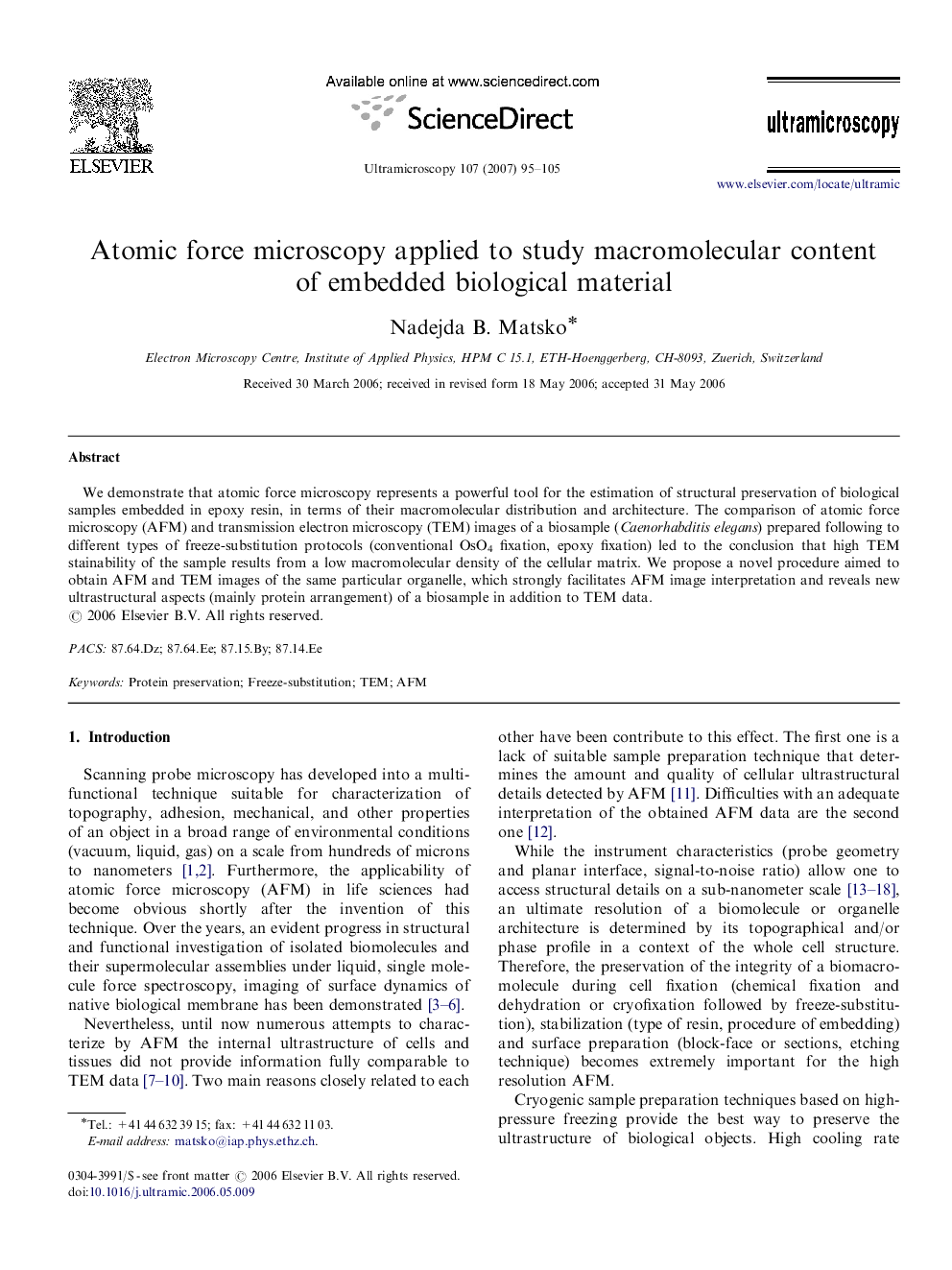| Article ID | Journal | Published Year | Pages | File Type |
|---|---|---|---|---|
| 1678688 | Ultramicroscopy | 2007 | 11 Pages |
We demonstrate that atomic force microscopy represents a powerful tool for the estimation of structural preservation of biological samples embedded in epoxy resin, in terms of their macromolecular distribution and architecture. The comparison of atomic force microscopy (AFM) and transmission electron microscopy (TEM) images of a biosample (Caenorhabditis elegans) prepared following to different types of freeze-substitution protocols (conventional OsO4 fixation, epoxy fixation) led to the conclusion that high TEM stainability of the sample results from a low macromolecular density of the cellular matrix. We propose a novel procedure aimed to obtain AFM and TEM images of the same particular organelle, which strongly facilitates AFM image interpretation and reveals new ultrastructural aspects (mainly protein arrangement) of a biosample in addition to TEM data.
